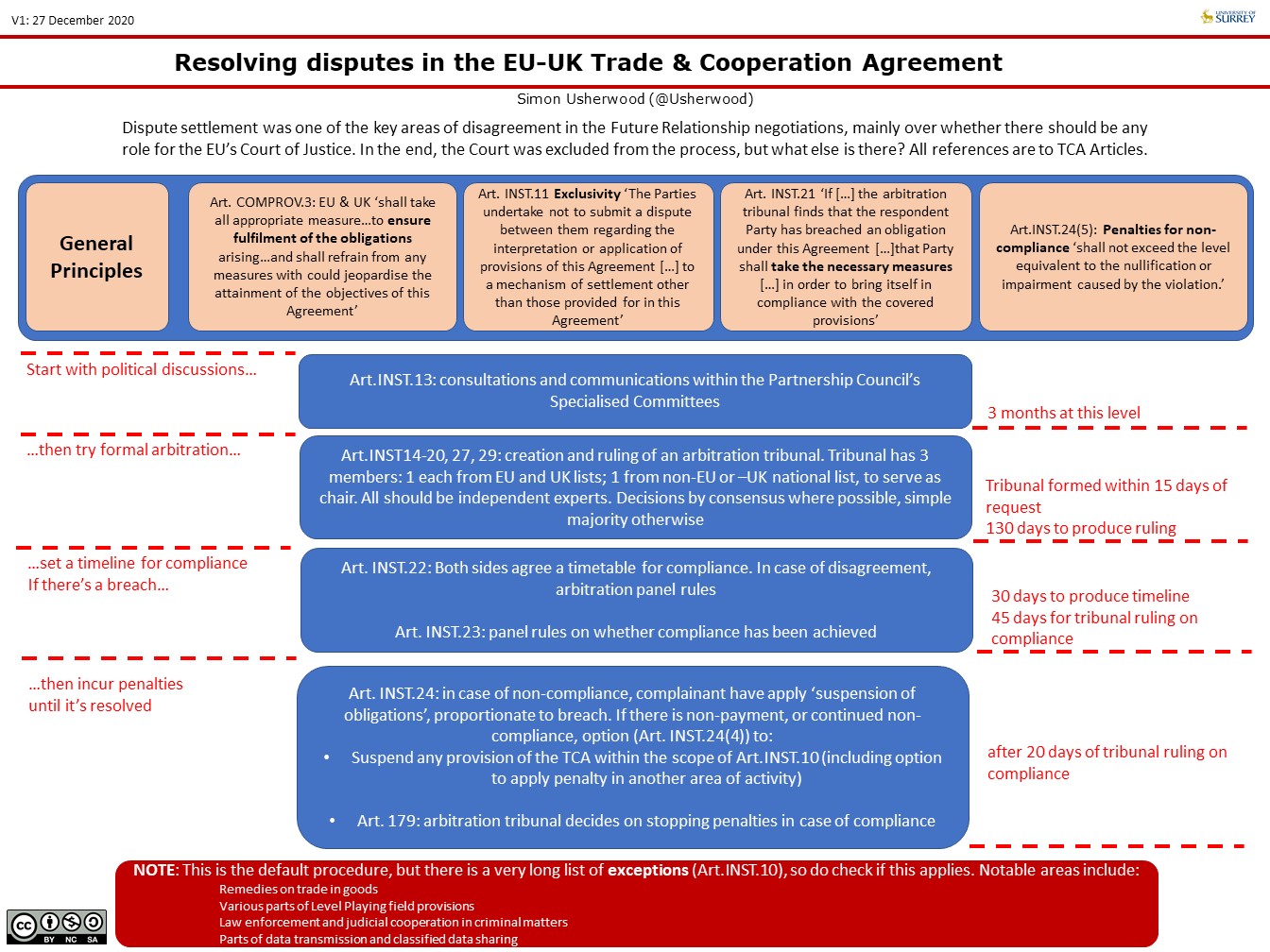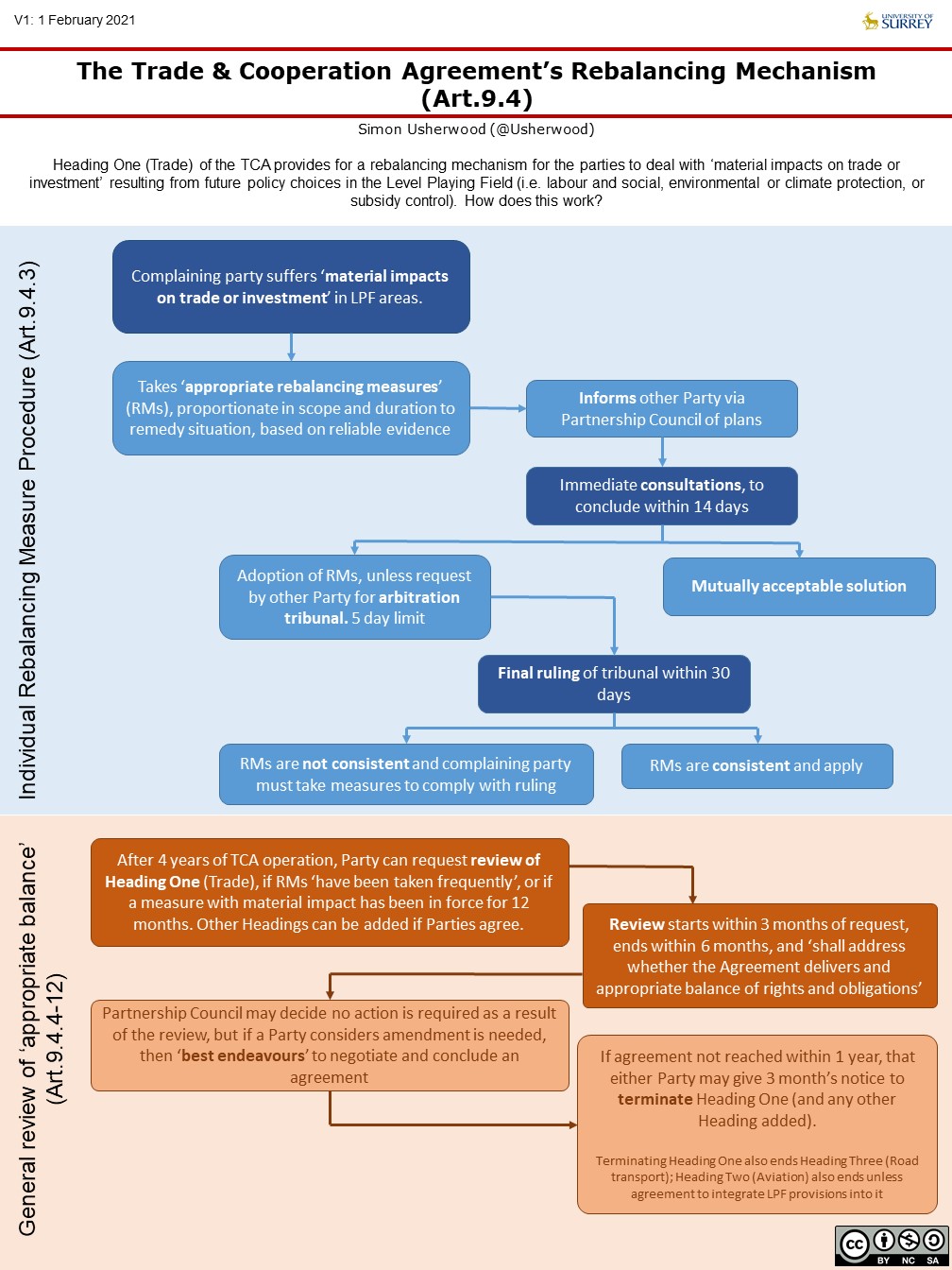Earlier this week I found myself getting a good corrective. Of late, I’ve been reading a lot of legal text and wondered idly if I was, in fact, becoming some kind of legal scholar.
Two hours with the Lords EU Committee and three actual, proper (and amazingly well-informed) fellow witnesses were more than enough to underline that I am no kind of legal scholar.
Which was nice.
Our discussion, about dispute settlement, was highly instructive (for me) since it exposed several layers of detail and interpretation that I’d not had from my own work on producing my graphics.



However, one point that I did manage to make that’s worth considering is the notion that the TCA contains so many termination options that it opens a potential reweighting in the political level of engagement.
To recap, the TCA has 13 separate termination options, for either all or some of the treaty:

Couple this to the very variegated dispute settlement mechanisms across the same treaty and a query arises: if part of the text is causing a significant amount of grief to one party, then why not just terminate it, rather than go through repeated arbitration cycles?
The scope for dividing up the treaty this way is considerable, and reflects both the speed of its creation and the concern to contain issues: notwithstanding the cross-linkage options available under the default mechanism (Art.INST.13-24), the impression is of inserting these more focused termination clauses to allow discrete packages of what cooperation there is to fall out without destroying the whole.
Of course, the flipside of this is that one party might decide to exercise that option. That might be for reasons for particular problems in that area, or it might be for more political reasons of signalling. In either case, the lowering of the barrier to termination might seem more attractive than the often more ponderous dispute mechanism (as my fellow witness Catherine Barnard pointed out), especially if the future prospects for recovering the situation didn’t look too good.
The more general point from all of this is that the TCA is a very conditional and contingent structure, with the capacity not only for considerable growth, but also considerable shrinkage. If the past month has shown anything, then it is that trust between the EU and UK has not enjoyed any kind of bounce with the conclusion of the TCA and that a combination of hot heads and lack of sensitivity to the matters at hand can produce very marked effects.
If one side decides that walking away is easier than trying to solve the underlying issues, then this will have material impacts and raise questions about the longevity of the TCA/WA architecture.
